
- Home
- Travel Packages
- Top Destination
-
Travel Attraction
By Category
Top Attraction

- Travel Agents
- Car Rentals
- Hotels
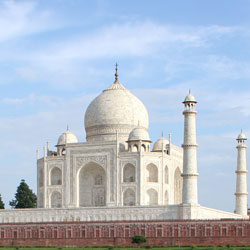
About The Taj Mahal The Taj Mahal is one of the most famous and iconic landmarks in India, located in the city of Agra, Uttar Pradesh. It is a UNESCO World Heritage Site and is considered one of the seven wonders of the world. Built by the Mughal Emperor Shah Jahan in memory of his wife Mumtaz Mahal, the Taj Mahal is a symbol of eternal love and architectural beauty. Timings Of Taj Mahal The Taj Mahal is open to visitors from sunrise to sunset, every day of the week except for Fridays. The monument is closed on Fridays for general viewing but is open for those who want to attend prayers at the mosque located within the premises. Entry Fee The entry fee for the Taj Mahal varies for Indian and foreign tourists. Indian tourists have to pay INR 50, while foreign tourists have to pay INR 1300. Children below the age of 15 can enter for free. Required Time And Restricted Items It is recommended to spend at least 2-3 hours exploring the Taj Mahal to truly appreciate its beauty. Visitors are not allowed to bring food, weapons, tobacco, or alcohol inside the monument. Drone photography is also strictly prohibited. Architecture Of Taj Mahal The Taj Mahal is a masterpiece of Mughal architecture, blending elements from Persian, Turkish, Indian, and Islamic architectural styles. The white marble mausoleum is adorned with intricate carvings, calligraphy, and semi-precious stones, making it a symbol of exquisite craftsmanship. Best Time To Visit The best time to visit the Taj Mahal is during the cooler months of October to March, when the weather is pleasant and comfortable for sightseeing. The early mornings and late evenings offer a magical view of the monument as the sunlight plays on its marble surface. How To Reach The Taj Mahal is easily accessible by road, rail, and air. The nearest airport is in Agra, the Agra Airport, which is well-connected to major cities in India. Agra also has a railway station with regular trains from Delhi, Jaipur, and other cities. History Of Taj Mahal The Taj Mahal was built between 1631 and 1653 by Emperor Shah Jahan in memory of his beloved wife Mumtaz Mahal, who died during childbirth. The construction of the mausoleum took over 20,000 workers and artisans to complete, and it is said to have cost an astronomical sum for that time. Inside Taj Mahal Inside the Taj Mahal, visitors can find the cenotaphs of Shah Jahan and Mumtaz Mahal, surrounded by intricate marble screens and inlaid floral designs. The main chamber houses the false tombs of the emperor and his wife, while the actual graves are located in a chamber below, closed to the public. Traveling Tips It is advisable to wear comfortable clothing and footwear while visiting the Taj Mahal, as you will need to walk around the complex. It is also recommended to carry a hat, sunglasses, and sunscreen to protect yourself from the sun. Hiring a guide can enhance your experience by providing insights into the history and architecture of the monument. Hotels Near Taj Mahal There are several hotels near the Taj Mahal that offer a range of accommodation options for visitors. Some of the popular hotels include the Oberoi Amarvilas, Tajview - IHCL SeleQtions, ITC Mughal, and Trident Agra. Nearby Tourist Spots Of Taj Mahal While visiting the Taj Mahal, tourists can also explore other attractions in Agra such as Agra Fort, Fatehpur Sikri, Mehtab Bagh, and the Tomb of Itimad-ud-Daulah. These sites offer a glimpse into the rich history and culture of the Mughal era.
Explore More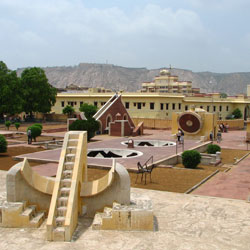
Largest of the five remarkable observatories made by Jai Singh in five different cities, this is the best-preserved one. It shows the Maharaja passion for astronomy. Translated into 'Instruments of Measuring the Harmony of the Heavens', Jantar Mantar was built between 1728 and 1734. It is a grand celebration of astronomical science. It appears to be a collection of sculptures with each sculpture serving a specific purpose of measuring attitudes, azimuths, calculating eclipses or counting of stars. This is the only observatory out of five built in running condition. Situated within the City Palace Complex, it is cut off from the main buildings.
Explore More
Vidhana Soudha was built in 1956 in Dravidian architecture. It is one of the most imposing buildings not only in Bangalore but also in India. Housing the Legislative Chambers of the state government, this 46-meter high seat of the government is Bangalore's best-known landmark. It houses 22 departments and 300 rooms.
Explore More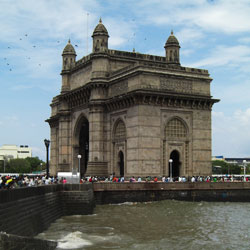
Gateway of India was built with yellow stone in Indo- Sarcenic style to commemorate the visit of King George V and Queen Mary to Bombay and since has become the Icon of Twentieth century Indian history. It is also remembered as the point from where the last British troops left the shores of independent India. To commemorate King George and Queen Mary's visit to India in 1911, the Gateway of India was built at Apollo Bunder, a popular meeting place. The Gateway was built by the British and designed by the architect George Wittet. The first stone was laid by the then Governor of Bombay on March 31st, 1913. This triumphal arch was built at an astonishing cost of 21 lakhs, and was open to the public in 1924. A conventional Arch of Triumph inspires its 26 metre high archway. It is complete with four turrets and intricate latticework carved into the yellow basalt stone. Ironically, when the British Raj ended in 1947, this colonial symbol also became a sort of epitaph: the last of the British ships that set sail for England left from the Gateway. Influences of the 16th century Gujarati style are also evident in its architecture. Situated next to the Taj Mahal Intercontinental Hotel, it is the most enduring landmark of Mumbai.
Explore More
Times Square is a prime commercial intersection that establishes itself at the juncture of 42nd Street, Seventh Avenue and Broadway intersect. It is the busiest square of New York and has also won several acclaims such as ‘The Great White Way’, ‘The Crossroads of the World’, and ‘The Center of the Universe’. Times Square lures thirty nine million visitors each year. The triangle that lies in the north of Times Square is called the Duffy Square, which was named after Chaplain Francis P. Duffy in year 1937. Along with the memorial of Chaplain Francis P. Duffy, there is also a figurine of George M. Cohan that can be located in Times Square. There is also a TKTS in Times Square where one can buy discounted tickets for various shows. On the eve of New Year, armada of people gather here to welcome and witness the first moments of the New Year. There is a ball hinged on the top of the One Times Square building. This ball is swooped down as part of New Year’s celebrations. The practice started in 1907 and has manifested itself as a tradition in Time Square. Prior to 1907, the New Years’ celebrations at Times Square involved fireworks, which was later stopped by the authorities. The New Year’s celebrations of 1999 also made news worldwide when two million people reached Times Square to whoop and clasp. Times Square building was also an important place for New Yorkians during Second World War. Many huddled here for a one minute silence and due to restrictions imposed on the lowering of the ball, the church bells were pealed instead. In 2008, LED ball was introduced to Times Square and now intersection has become a favourite spot for many to celebrate Halloween and Valentine’s Day every year.
Explore More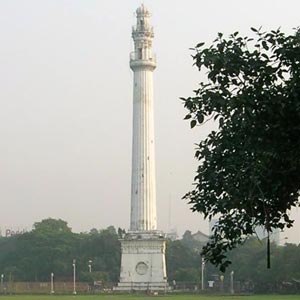
This is a 48 meter high monument, built with a unique blend of Turkish, Egyptian and Syrian architecture and is named after Sir David Ochterlony. In 1969 its name was changed to 'Shaheed Minar'. It was erected in 1828. There a fine view from the top of the column, but permission to ascend must be obtained from police headquarters.
Explore More
The Sarkhej Roza is an elegant architectural creation remarkable for the use of pierced stone trellises and complete absence of arches. This monument houses the tombs of Saint Ahmed Khattu Baksh and also that of Emperor Mehmud Shah Beguda and his queen. The peaceful atmosphere makes it an ideal retreat. The suburb of Sarkhej, about 8 Kms. southwest of Ahmedabad is noted for its elegant group of buildings, including the Mausoleum of Azam and Mu'assam, built in 1457 by the brothers who were responsible for Sarkhej's architecture. The architecture here is interesting because the style is almost purely Hindu, with little of the Saracenic influence so evident in Ahmedabad. As you enter Sarkhej, you pass the Mausoleum of Mahmud Begara and, beside the tank and connected to his tomb, that of his queen, Rajabai. Also by the tank is the Tomb of Ahmad Khattu Ganj Buksh, a renowed Muslim saint and spiritual adviser to Ahmed Shah. He was the revered saint whose blessings were invoked while founding Ahmedabad. The palace, with pavilions and a harem, is also around the tank. The Dutch established a factory in Sarkhej in 1620 to process the indigo grown here.
Explore More
One of the most beautiful of the more modern British constructions in Madras is Ripon Building, home of the Madras Corporation. This splendid domed vision in white, built in 1913, is part of a large municipal complex that includes parks and gardens, Nehru Stadium, Victoria Public Hall, a public meeting place out of the gaslight era, and Moore market, a fascinating shopper's paradise.West of Central Station is Ripon Building, the dazzling white headquarters of the Corporation of Chennai. One of the few public buildings in Chennai that time has not managed to ravage.
Explore More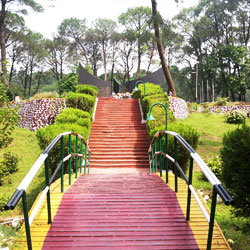
Set amidst the pine groves is a war memorial, built on the entry point of Dharamsala to commemorate the post independence war heroes of Himachal Pradesh. A web of narrow paths and landscaped lawns lead towards this monument. Just outside the war memorial is the Sainik cafe serving vegetarian snacks and coffee.
Explore More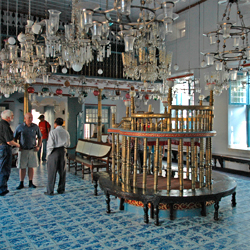
In Mattancherry Synagogue is built in 1568 AD. The Great Scrolls of the Old Testment, the copper plates in which the grants of privilege made by the Cochin rulers were recorded and the exquisite Chinese hand-painted tiles are of interest. This was built in the year 1568 AD. There are loads of things to see and enjoy at this place. Old Testaments, copper plates that have grants of privileges given by Cochin Rulers and many other records are still kept here with great care! In addition, you must check out Chinese hand-painted tiles!
Explore More
The National Monument, or Monas (Monumen Nasional), is one of Jakarta’s most iconic landmarks. Standing at 132 meters (433 feet), Monas is a towering symbol of Indonesia's struggle for independence. The monument is located in the heart of Jakarta, within Merdeka Square, and it is a prominent feature of the city’s skyline. The National Monument is not just a structure; it is a symbol of the spirit and resilience of the Indonesian people, representing the country’s long and hard-fought journey to independence from Dutch colonial rule. It is one of the most visited tourist attractions in Indonesia and is a must-see for anyone visiting Jakarta. How to Reach National Monument, Jakarta The National Monument is centrally located in Jakarta, making it easily accessible from various parts of the city. If you are traveling by car or taxi, you can reach the monument by heading towards Merdeka Square. The monument is situated near major roads like Jalan Medan Merdeka Selatan, and it is surrounded by other important landmarks in the city. If you prefer public transportation, the nearest TransJakarta Bus Rapid Transit (BRT) station is "Monas," which is a short walk from the monument. You can also take the commuter train (KRL) to the Gambir station, which is just a 10-minute walk from the National Monument. Ride-hailing services like Gojek or Grab are also convenient options for reaching Monas directly. Weather at National Monument, Jakarta Jakarta experiences a tropical climate, and the weather around the National Monument is generally hot and humid throughout the year. The average temperature ranges from 25°C to 32°C (77°F to 89°F). Jakarta has two seasons: the rainy season (from November to March) and the dry season (from April to October). The dry season is typically the best time to visit Monas as the weather is more comfortable for outdoor activities. If you plan to visit during the rainy season, be prepared for heavy showers and bring an umbrella or raincoat. It’s advisable to check the weather forecast before your visit, especially if you plan to go up the monument for a panoramic view of Jakarta. Timing and Opening Hours of National Monument, Jakarta The National Monument is open daily from 8:00 AM to 4:00 PM. Visitors can explore the park surrounding the monument at any time during these hours, but the ticket counter for the monument itself closes at 4:00 PM. It’s important to note that the monument and its surrounding park can get crowded on weekends and public holidays, especially in the late morning and afternoon. To avoid the crowds and to enjoy a more peaceful experience, it’s best to visit early in the morning. If you wish to visit the top of the monument, make sure to arrive early enough to get in line, as it can take some time to access the elevator for the ride to the top, especially during peak hours. Why National Monument, Jakarta is Famous The National Monument is famous for its historical and cultural significance. It was built to commemorate Indonesia’s fight for independence from Dutch colonial rule and to honor the struggles and sacrifices made by the Indonesian people in achieving independence. The monument was inaugurated on August 17, 1975, Indonesia’s Independence Day, and it remains one of the country's most important national symbols. Its iconic flame-shaped gold sculpture at the top represents the spirit of freedom and independence. Aside from its historical value, the monument also offers panoramic views of Jakarta, making it a popular tourist destination. It is located in the heart of the city, within Merdeka Square, and is surrounded by government buildings, parks, and museums, further enhancing its prominence. Entry and Visit Details about National Monument, Jakarta Entry to the National Monument park is free of charge, so visitors can freely walk around and explore the area. However, to access the monument’s observation deck at the top, visitors are required to purchase tickets. The ticket prices are relatively affordable, with different pricing for adults and children. As of recent reports, the general entry fee for the monument is around IDR 20,000 (approximately USD 1.30) for adults, and a discounted fee is available for students and children. The ticket grants access to the monument’s base as well as the elevator ride to the observation deck, where you can enjoy spectacular views of Jakarta. Additional fees may apply if you wish to visit nearby attractions, such as museums or exhibitions within the complex. History and Architecture of National Monument, Jakarta The National Monument was conceived during the presidency of Sukarno, the first president of Indonesia, as a symbol of the nation's independence. Construction began in 1961 and was completed in 1975. The monument was designed by the Indonesian architect Soedarsono and stands on the site of a former colonial building. The design of the National Monument is a striking blend of modernist and traditional Indonesian architectural styles. The base of the monument features a large plaza, and the obelisk-like structure rises to 132 meters, topped by a golden flame that symbolizes the country’s enduring spirit of independence. At the base of the monument, there is a museum that tells the story of Indonesia’s struggle for independence. The museum houses various historical artifacts, dioramas, and photographs that illustrate key events in the country’s history. The observation deck at the top of the monument offers 360-degree views of Jakarta and is an ideal spot for taking photos of the city’s skyline and landmarks. Things to Do at National Monument, Jakarta There are several activities you can enjoy while visiting the National Monument: Visit the Observation Deck: Take the elevator to the top of the National Monument for a breathtaking panoramic view of Jakarta. From here, you can see the city’s sprawling urban landscape, as well as nearby attractions like Merdeka Square, the Presidential Palace, and the Jakarta skyline. Explore the Museum: The museum at the base of the monument provides fascinating insights into Indonesia’s journey to independence, with exhibits that include historical artifacts, maps, and photographs. Stroll Around the Park: The area surrounding the National Monument is a large, open park where visitors can relax, take a leisurely walk, or enjoy a picnic. The park is also home to fountains and sculptures that add to the beauty of the area. Learn About Indonesian History: Take the time to learn about Indonesia’s history and independence by exploring the nearby museums, such as the Museum of the History of Jakarta and the National Museum. Attend National Events: Merdeka Square, where the National Monument is located, is the site of national celebrations, such as Independence Day on August 17th. These events include parades, cultural performances, and ceremonies that attract thousands of people. Facts about National Monument, Jakarta The National Monument stands at a height of 132 meters (433 feet) and is one of the tallest monuments in Southeast Asia. The golden flame at the top of the monument weighs 14.5 tons and is made of bronze, covered in gold. The monument is located within a large park area that covers approximately 80 hectares (200 acres) in the center of Jakarta. The base of the National Monument features a museum that showcases Indonesia’s struggle for independence, with more than 50 dioramas and historical exhibits. On the 17th of August each year, Merdeka Square hosts a grand Independence Day celebration, with events centered around the National Monument. Tips for Visiting National Monument, Jakarta Visit Early: To avoid large crowds and long wait times for the elevator to the top, it’s best to visit early in the day, especially on weekdays. Wear Comfortable Shoes: You’ll be walking around the monument’s park and surrounding area, so comfortable footwear is essential. Bring Water and Snacks: Jakarta can be hot and humid, so be sure to stay hydrated. You may want to carry water and light snacks, especially if you plan to explore the park for a while. Check the Weather: Since the National Monument is an outdoor attraction, it’s a good idea to check the weather before your visit. The dry season (April to October) is the best time to visit. Be Respectful: The National Monument is a symbol of national pride for Indonesians, so be respectful of the monument and the surrounding areas while visiting.
Explore More
Adjacent to the Fort St. George on the south is the War Memorial, which housed the coastal battery and was formerly called 'Cupid's Bow. The Memorial honours those who laid down their lives for their country since the First World War. It is situated on the Marina beach road. It was constructed to commemorate the victory of the allied armies during World War I (1914-1918) and later became the victory war memorial for the World War II (1939-1945) in the memory of those from Chennai presidency who lost their lives serving the nation.
Explore More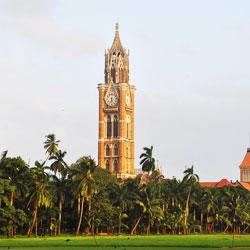
Located in the gardens of Mumbai University, Rajabai Clock Tower consists of 5 elaborately decorated storeys. The tower is 280 ft. in height commanding a fine view of the city. Next to the High Court, the Venetian -Gothic University has a Gothic clock tower that is curiously adorned with oriental figures. In the old days it used to play Rule Britannia, God Save the King and a Handel Symphony among sixteen tunes that changed four times a day; now the repertoire is limited to the wafting chimes of the Big Ben on the quarter hour. The Clock Tower is named after the mother of a 19th century stockbroker, who contributed towards its construction. It has a spiral staircase, which is unfortunately closed to the visitors after several unhappy citizens hurled themselves from the top. Under the clock tower is the magnificent University Library, with what are undoubtedly some of the most exquisite stained glass windows in Asia. These have recently been treated by British conservationists and restored to their pristine glory. Well worth a look. Architects who spent most of their working years in the city designed most buildings in Mumbai. The buildings of the University in the fort campus are the exception-- the English architect Sir Gilbert Scott designed them. The �Cotton King� and banker, Premchand Roychand, funded the library and the Rajabai clock tower, in memory of his mother Rajabai, with its marvelous sculpted figures. The convocation hall was funded by the man with the deepest pockets in Bombay-- Sir Cowasji Jehangir Readymoney. One of Mumbai's outstanding landmarks, the Rajabai Clock Tower is situated in the gardens of Mumbai University. Inspired by Giotto's Companile in Florence, Gilbert Scott planned the structure. It was completed in the 1870's.
Explore More
A pillar of Hindustani classical music, the great Tansen, the musician extraordinaire of Akbar's Court, lies buried in Gwalior. The beautiful garden, in which the tomb is located, is the venue of the annual music festival held during November-December. Distinct personalities from abroad also visit and rejoice music. Gwalior is also renowned for the tomb of Tansen, the musician extraordinaire of Akbar's Court (one of his 'nau ratan', nine jewels). Gwalior retains a strong musical tradition, and continues to be an influential force in Hindustani classical music. Tansen, an exponent of the Dhrupad style, went on to evolve the Gwalior Gharana style, whose contemporary exponent is the globally renowned Sarod player, Amjad Ali Khan. The memorial to this great musician has a pristine simplicity about it, built in the early Moghul architectural style. More than a monument, the tomb is part of Gwalior's living cultural heritage. Leading musicians of the country gather here to give performances during the festival.
Explore More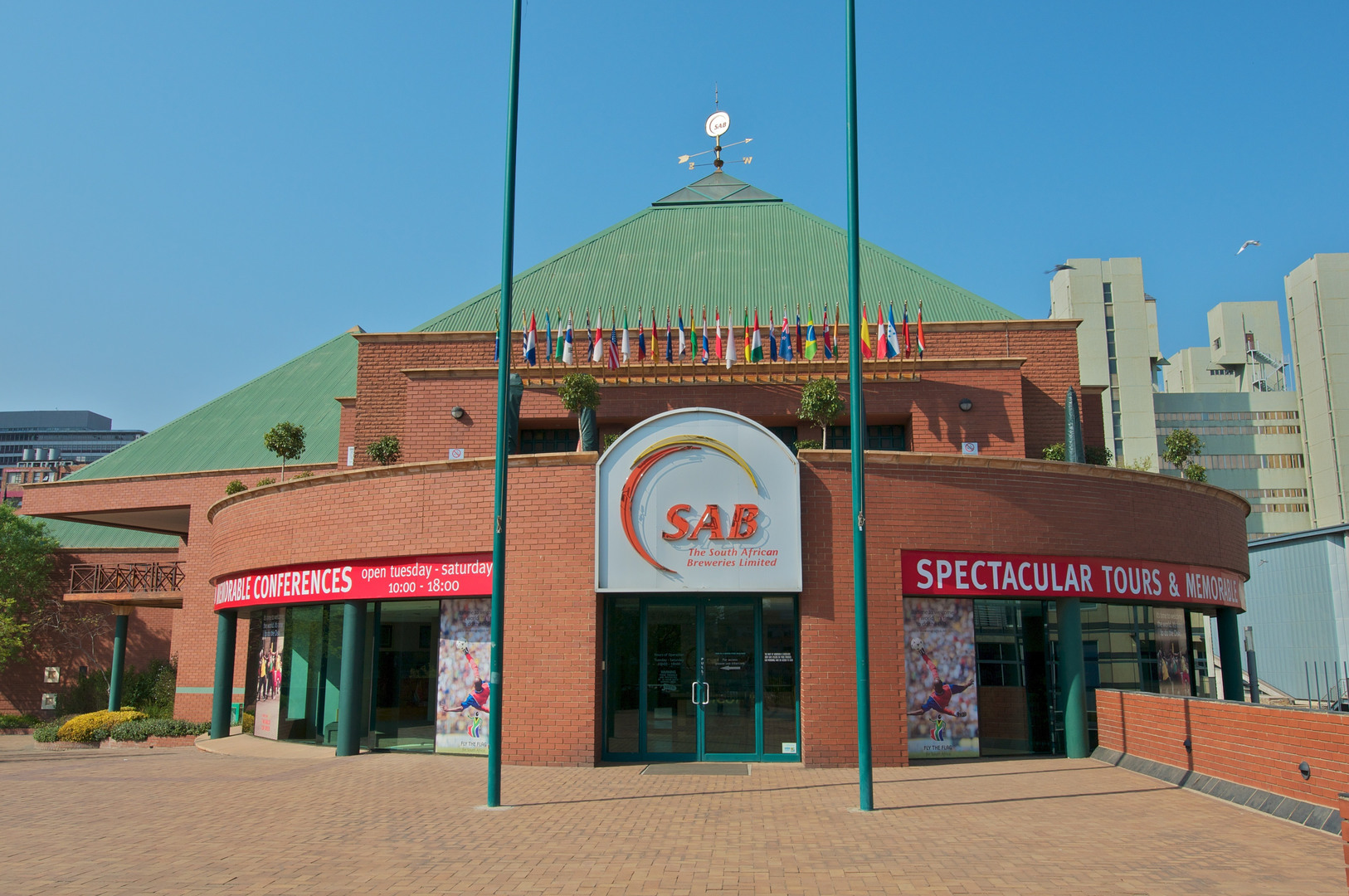
The SAB World of Beer is one of the most popular destinations for the beer enthusiasts from all over the world. Situated in Johannesburg, the SAB World of Beer presents the history of beer brewing as it travelled from Mesopotamia to Africa and Europe. The beer brewing processes are depicted in detail. And of course, there is no better way to end the tour, than with a couple of ice cold frosties.
Explore More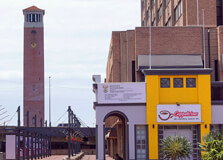
The Campanile, standing tall and proud in the heart of Port Elizabeth, South Africa, is an iconic landmark steeped in history and offering breathtaking panoramic views of the city and Algoa Bay. This impressive structure, built to commemorate the arrival of the British Settlers in 1820, serves as a significant historical monument and a popular tourist attraction. Its distinctive architecture and the chiming of its bells have become synonymous with Port Elizabeth's identity, making it a must-visit destination for anyone exploring the city's rich heritage and scenic beauty. How to reach The Campanile, Port Elizabeth The Campanile is centrally located in Port Elizabeth's city center, making it easily accessible by various means of transportation: By Car: If you are driving, The Campanile is situated at the entrance to the Settlers Park, near the Baakens River. It is well signposted from different parts of the city. Parking is available in the vicinity, although it might be limited at certain times. It's advisable to look for parking along the streets or in nearby parking garages. By Taxi or Ride-sharing Services: Taxis and ride-sharing services like Uber and Bolt are readily available in Port Elizabeth and can provide a convenient ride directly to The Campanile. Simply provide "The Campanile, Port Elizabeth" as your destination. By Public Transport: Port Elizabeth's public bus system has routes that service the city center, with several stops within walking distance of The Campanile. You can check the local bus schedules for the most convenient options from your location. By Walking: If you are staying in the city center or nearby areas, The Campanile is easily reachable on foot. It's a prominent structure that can be easily located. Weather in Port Elizabeth Port Elizabeth enjoys a mild climate year-round, often referred to as having a "Mediterranean" climate. Summers (December to February) are warm and sunny with average daytime temperatures ranging from 20°C to 25°C. Winters (June to August) are mild with average daytime temperatures ranging from 15°C to 20°C, and occasional rainfall. The weather is generally pleasant for outdoor activities throughout the year. When visiting The Campanile, the weather will primarily affect your experience at the top viewing platform, which is open-air. It's advisable to check the weather forecast before your visit and dress accordingly. Even on a mild day, it can be breezy at the top of the tower. Timing The Campanile typically has specific opening and closing hours for visitors who wish to ascend the tower. It is recommended to check the official Nelson Mandela Bay Tourism website or contact them directly for the most accurate and up-to-date information on their operating hours before planning your visit. Generally, such attractions tend to be open during standard business hours, usually from morning to late afternoon. The best time to visit The Campanile is often during the late afternoon to enjoy the sunset views over the city and the bay, provided the weather is clear. This also offers a beautiful photographic opportunity. Why famous for The Campanile, Port Elizabeth? The Campanile is famous for several significant reasons: Historical Significance: Built in 1923 to commemorate the centenary of the arrival of the British Settlers in 1820, it stands as a powerful symbol of the city's colonial history. Panoramic Views: The tower offers unparalleled 360-degree views of Port Elizabeth, Algoa Bay, the harbour, and the surrounding landscape from its observation deck. Chiming Bells: The Campanile houses a set of 23 bells, which chime at regular intervals, adding a unique auditory dimension to the landmark and the surrounding area. Architectural Landmark: Its distinctive and elegant architecture makes it a prominent feature of the Port Elizabeth skyline. Tourist Attraction: It is a popular destination for tourists seeking historical insights and stunning views of the city. Location at Settlers Park Entrance: Its position at the entrance to the scenic Settlers Park adds to its appeal, allowing visitors to combine a visit to the tower with exploring the park. Entry and visit details about The Campanile, Port Elizabeth Visiting The Campanile is generally accessible, and there is usually a nominal fee to ascend the tower. Here are some details regarding entry and your visit: Entry Fee: There is typically an entrance fee to go up The Campanile. The fee is usually quite reasonable. It's recommended to check the official Nelson Mandela Bay Tourism website for the current fee structure. Tickets: Tickets are usually purchased at the entrance of The Campanile. Ascending the Tower: Visitors can typically ascend the tower via a series of stairs to reach the observation deck at the top. Be prepared for a moderate climb. Duration of Visit: The time spent at The Campanile will depend on how long you wish to enjoy the views and take photographs. Allow at least 30-45 minutes for the ascent, viewing time, and descent. Accessibility: Due to the historical nature of the structure and the need to climb stairs, The Campanile may not be fully accessible to individuals with mobility challenges. It's advisable to inquire about accessibility options before your visit. History The Campanile was conceived as a lasting tribute to the arrival of the British Settlers in Algoa Bay in 1820. The foundation stone was laid in 1920, and the structure was officially inaugurated in 1923. The name "Campanile" is derived from the Italian word for a freestanding bell tower. Over the years, The Campanile has become an enduring symbol of Port Elizabeth's history and its connection to the early British settlement of the region. It has witnessed significant events in the city's development and has been a silent observer of Port Elizabeth's growth into the modern city it is today. The bells were added later and have become an integral part of the Campanile's identity, chiming out melodies that resonate through the city. Architecture The architecture of The Campanile is a distinctive and elegant design that reflects the early 20th-century aesthetic. The tower is constructed primarily of red brick and features a series of arched windows and decorative elements that add to its visual appeal. The structure rises to a significant height, making it a prominent landmark on the city's skyline. At the top of the tower is the open-air observation deck, which is surrounded by a railing for safety and offers unobstructed panoramic views. The design is both functional, providing a viewing platform, and symbolic, representing a lasting monument to the city's heritage. The inclusion of the bells within the tower was also a key architectural consideration, ensuring their sound could resonate effectively across the surrounding area. Things to do A visit to The Campanile offers a unique and rewarding experience: Ascend the Tower: Climb the stairs to the observation deck at the top for breathtaking 360-degree views of Port Elizabeth and Algoa Bay. Enjoy Panoramic Views: Take your time to soak in the stunning vistas, identify landmarks, and appreciate the city's layout and coastal setting. Listen to the Chimes: Experience the melodic chimes of the 23 bells as they ring out at regular intervals. Photography: Capture memorable photographs of the city skyline, the bay, and the surrounding landscape from the elevated vantage point. Learn about History: Reflect on the historical significance of The Campanile as a monument commemorating the British Settlers. Visit Settlers Park: Combine your visit to The Campanile with a stroll through the adjacent Settlers Park, a beautiful green space offering walking trails and natural scenery. Facts about The Campanile, Port Elizabeth Built in 1923 to commemorate the centenary of the arrival of the British Settlers in 1820. Stands at a significant height, offering panoramic views of Port Elizabeth. Houses a set of 23 bells that chime regularly. Located at the entrance to Settlers Park. A prominent landmark and a symbol of Port Elizabeth's history. Offers a unique perspective of the city and Algoa Bay. The name "Campanile" means bell tower in Italian. Tips about The Campanile, Port Elizabeth Check the official Nelson Mandela Bay Tourism website for the most up-to-date information on opening hours and entrance fees. Be prepared for a climb up a series of stairs to reach the observation deck. Wear comfortable shoes for the climb. Bring your camera to capture the stunning panoramic views. Consider visiting during the late afternoon for beautiful sunset views (weather permitting). Be mindful of the wind at the top of the tower, especially on breezy days. Take your time to enjoy the views and identify landmarks. Combine your visit with a walk through the adjacent Settlers Park. Check the timing of the bell chimes if you wish to experience them. Inquire about any historical information or guided tours that might be available at The Campanile.
Explore More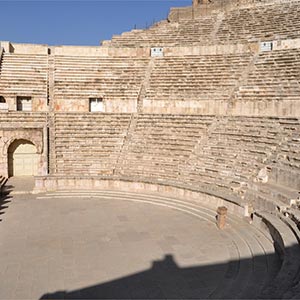
One of the prominent landmarks in the city of Amman, Roman Amphitheatre is one of the monuments belonging to the pre-historic era, which attracts many foreign tourists. Its restoration began in the year 1957 and made the place what it is today. Although the original materials could not be used for the rebuilding, yet the Amphitheatre stands as a beautiful piece of architecture. HistoryToday’s Amman was once the Roman city of Philadelphia. It is believed that the amphitheater was built in 2nd century AD during the rule of Antonius Pius (AD 138–61). StructureIt had been carved from the north of a hill to keep sunlight off the spectators. The theatre is built in traditional Roman style architecture, with semi-circular rows having stone bench seating. It can chair around 6000 people in its three sections- the ones closest to the stage was for the rules, the middle section for the military and the last one was for the general public. PresentlyTourist can visit this location in downtown Amman at any time. Cultural and sports events are occasionally held here. The best time to come here for photographers is early morning when the sun bestows a soft light. The view of sunset is beautiful from the top-tier.
Explore More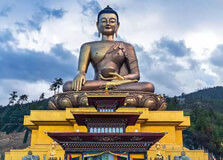
Buddha Dordenma is a massive statue of Shakyamuni Buddha located in the mountains of Thimphu, the capital city of Bhutan. Sitting high on a hill in the Kuenselphodrang Nature Park, this enormous golden statue stands at 169 feet (51.5 meters) tall and overlooks the Thimphu Valley. The site is not only a symbol of peace but also a major pilgrimage destination and a tourist attraction. Surrounded by beautiful landscapes and offering panoramic views of the city, Buddha Dordenma is one of the most iconic landmarks in Bhutan. How to Reach Buddha Dordenma, Thimphu To visit Buddha Dordenma, you first need to reach Thimphu, the capital of Bhutan. The nearest airport is Paro International Airport, which is about 50 kilometers away from Thimphu. From Paro, you can hire a taxi or use a local tour operator to get to Thimphu. The road journey takes about 1.5 to 2 hours. Once in Thimphu, Buddha Dordenma is located around 7 kilometers from the city center. You can hire a taxi, take a guided tour, or even hike to the statue if you enjoy walking in nature. The road to the site is well-paved, and the location is accessible by car or bike. Weather at Buddha Dordenma, Thimphu Thimphu enjoys a mild climate for most of the year. Summers (June to August) are warm and pleasant with occasional rainfall. Winters (December to February) can get quite cold, especially in the mornings and evenings, with temperatures sometimes dropping below zero. The best time to visit Buddha Dordenma is during the spring (March to May) and autumn (September to November) when the weather is most comfortable and the skies are usually clear, offering excellent views of the valley. Timings Buddha Dordenma is open to visitors every day. The typical visiting hours are from 9:00 AM to 5:00 PM. However, it’s always a good idea to check locally or with a tour guide for updated timings, especially on public holidays or special religious days. Why Famous for Buddha Dordenma, Thimphu? Buddha Dordenma is famous for several reasons. It is one of the tallest Buddha statues in the world and represents the blessings of the Buddha to spread peace and happiness across the world. The statue is believed to fulfill an ancient prophecy that predicted the building of a great statue in this region to bless the entire world. The massive figure is not just an artistic wonder but also a spiritual monument. Inside the statue, there are over 125,000 smaller Buddha statues made of bronze and gilded in gold. It’s a place where art, spirituality, and cultural heritage blend beautifully. Entry and Visit Details There is no entry fee to visit Buddha Dordenma, making it an accessible destination for all. Visitors can explore the surrounding park, enter the main statue (when open), and take photographs of the breathtaking views and the structure itself. Since it is a religious site, visitors are expected to dress modestly and behave respectfully. Removing shoes before entering indoor spaces and avoiding loud behavior are appreciated. History and Architecture The construction of Buddha Dordenma began in 2006 and was completed in 2015. It was built to commemorate the 60th anniversary of the fourth king of Bhutan, Jigme Singye Wangchuck. The statue fulfills a prophecy made by yogi Sonam Zangpo in the 20th century about a statue bringing spiritual blessings to the world. The statue is made of bronze and coated in gold, giving it a majestic golden appearance. It combines traditional Bhutanese and modern architectural styles. The inside of the statue houses meditation halls and thousands of small Buddha statues, creating a sacred atmosphere. Things to Do While visiting Buddha Dordenma, here are some things you can do: Admire the massive golden Buddha statue up close Explore the beautiful Kuenselphodrang Nature Park surrounding the statue Take a panoramic view of Thimphu city from the viewpoint Photograph the statue during sunrise or sunset for the best lighting Learn about Bhutanese culture and Buddhist teachings Visit nearby temples and spiritual sites Facts and Tips about Buddha Dordenma, Thimphu The statue is made of 8,000 tons of bronze and gilded in gold. It houses over 125,000 smaller Buddha statues inside. It is located at an altitude of about 8,200 feet (2,500 meters). Photography is allowed outside, but some indoor areas may restrict it. Wear comfortable shoes and carry water if you plan to hike around. There are restrooms and small souvenir shops near the site. Early mornings and late afternoons are the best times for visiting to avoid crowds and heat.
Explore More
Bahiravokanda Vihara Buddha Statue
The Bahiravokanda Vihara Buddha Statue, located in Kandy, Sri Lanka, is one of the most iconic landmarks in the region. Standing tall at 88 feet, it is one of the largest Buddha statues in Sri Lanka, offering a majestic view of the city and its surrounding hills. The statue is a symbol of peace, spirituality, and devotion, and it attracts both religious pilgrims and tourists alike. The temple complex surrounding the statue is also a place of deep religious significance, offering a serene environment for meditation and reflection. How to Reach Bahiravokanda Vihara Buddha Statue, Kandy The Bahiravokanda Vihara Buddha Statue is located just a few kilometers from the Kandy city center, making it easily accessible for visitors. Here’s how you can reach the site: By Car: From Kandy city, the statue is about a 10-15 minute drive. You can hire a tuk-tuk or a taxi from the city center, which will take you directly to the base of the hill where the statue stands. On Foot: If you're staying in Kandy, you can take a scenic walk uphill from the city center to the statue. The walk may take around 30-40 minutes, depending on your pace, and offers stunning views of Kandy along the way. Public Transport: Local buses and tuk-tuks also serve the area, though it's easier to use a taxi or tuk-tuk due to the hilly terrain. Weather at Bahiravokanda Vihara Buddha Statue, Kandy Kandy, located in Sri Lanka’s central highlands, experiences a tropical climate. The weather is generally pleasant, with mild temperatures due to the elevation. However, the temperature can vary, so here’s what to expect: Temperature: Average temperatures range between 18°C to 28°C (64°F to 82°F), with cooler evenings, especially at higher altitudes. Best Time to Visit: The best time to visit the Bahiravokanda Vihara Buddha Statue is during the dry season, from December to March, when the weather is pleasant and there’s less chance of rainfall. Rainy Season: Sri Lanka’s monsoon season lasts from May to October, and you may encounter rainfall, particularly in the afternoon. Visiting during the dry months ensures a more comfortable experience. Timing of Bahiravokanda Vihara Buddha Statue, Kandy The Bahiravokanda Vihara Buddha Statue is open to the public every day. Visitors can explore the site during the following hours: Opening Hours: 7:00 AM to 7:00 PM daily. Best Time to Visit: It is ideal to visit during the morning or late afternoon for the best lighting for photography and to avoid the midday heat. Why is Bahiravokanda Vihara Buddha Statue, Kandy Famous? The Bahiravokanda Vihara Buddha Statue is famous for several reasons: Size and Structure: At 88 feet tall, it is one of the tallest Buddha statues in Sri Lanka. The sheer size and grandeur of the statue make it a prominent feature in Kandy’s skyline. Scenic Views: The statue is perched on a hill, providing panoramic views of Kandy city and the surrounding hills. The vista from the top is breathtaking and attracts visitors for both the religious significance and the natural beauty. Religious Importance: The statue is not only a major tourist attraction but also a site of deep religious significance. It is a symbol of Buddhism and a place of peace and reflection for devotees. Accessibility: Its location offers an easy yet scenic climb for visitors, making it a popular spot for both pilgrims and tourists seeking spiritual solace or a peaceful retreat. Entry and Visit Details About Bahiravokanda Vihara Buddha Statue, Kandy The Bahiravokanda Vihara Buddha Statue is open to all visitors, regardless of religious background. Here are the details you need to know: Entry Fee: There is a small entry fee for visitors, which helps in the maintenance and upkeep of the site. The fee is usually around LKR 300 to LKR 500 (approximately $2 to $3 USD). Dress Code: As a place of religious significance, visitors are expected to dress modestly. It is recommended to wear long pants or skirts and avoid wearing revealing clothing. Facilities: The site has basic facilities like washrooms and parking for visitors. There are also local shops selling souvenirs and snacks near the base of the hill. History and Architecture of Bahiravokanda Vihara Buddha Statue The Bahiravokanda Vihara Buddha Statue was constructed in 1992 as a part of the Bahiravokanda Vihara Monastery complex. The idea behind the statue was to create a modern-day monument to Lord Buddha, while also paying homage to Sri Lanka’s rich Buddhist heritage. The statue itself is made of white-painted concrete and stands tall at 88 feet, making it one of the tallest Buddha statues in the country. The serene expression on the face of the Buddha adds to the statue's calm and peaceful aura. The monument is surrounded by a small temple complex with a few other statues and shrines, offering a spiritual atmosphere for visitors. Things to Do at Bahiravokanda Vihara Buddha Statue Admire the Statue: Take time to appreciate the grandeur and serenity of the Buddha statue. The views from the top are magnificent, offering an excellent opportunity for photography. Visit the Temple Complex: Explore the small temple complex around the statue. The tranquil environment is ideal for meditation or quiet reflection. Enjoy the Scenic Views: The hilltop location offers panoramic views of Kandy city and the surrounding mountains. It's an excellent spot for nature lovers and photographers. Learn About Buddhism: While visiting, you can gain insights into Sri Lankan Buddhism and the significance of the Buddha in the country’s culture and history. Interesting Facts About Bahiravokanda Vihara Buddha Statue The Bahiravokanda Buddha Statue is one of the tallest Buddha statues in Sri Lanka, standing at an impressive 88 feet. It is painted white, and the statue is visible from most parts of Kandy city, making it a significant landmark. The statue is located on top of a hill, offering breathtaking views of Kandy and its surrounding landscapes. Although the statue was constructed relatively recently, it has quickly become an important pilgrimage site for Buddhists in Sri Lanka. Tips for Visiting Bahiravokanda Vihara Buddha Statue, Kandy Bring Comfortable Shoes: Since the statue is situated on a hill, be prepared to walk uphill. Comfortable shoes are recommended for the walk. Bring a Camera: The views from the hilltop are incredible, so make sure to bring a camera to capture the scenic beauty of the area. Respect the Local Customs: As the site is a Buddhist religious monument, visitors should be respectful, especially when interacting with locals or monks. Go Early or Late: Visit in the morning or late afternoon to avoid the heat and crowds, and to experience the peaceful atmosphere of the site. Stay Hydrated: Kandy’s tropical climate can be warm, so bring water with you to stay hydrated, especially if you're walking uphill.
Explore More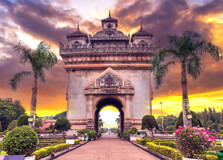
Patuxai, often referred to as the "Victory Gate," is one of the most iconic landmarks in Vientiane, the capital of Laos. Standing proudly at the center of the city, it resembles the Arc de Triomphe in Paris, though it carries its own distinct cultural and historical significance. The monument was built to honor those who fought for the country’s independence from France and serves as a symbol of Laos’ resilience and strength. How to Reach Patuxai, Vientiane Patuxai is located in the heart of Vientiane, making it easy to reach from most parts of the city. Whether you’re staying in the city center or the outskirts, getting to Patuxai is straightforward. Here are some common ways to reach the monument: By Tuk-Tuk: Tuk-tuks are one of the most popular and affordable ways to get around in Vientiane. They are available throughout the city and can be hired to take you directly to Patuxai. By Bicycle: Vientiane is a bicycle-friendly city, and renting a bike is a great way to explore the city at your own pace. Patuxai is just a short ride from most central locations, making it an ideal stop for cyclists. By Car/Taxi: If you prefer more comfort, taxis and private cars can easily take you to Patuxai. Most hotels and tour operators can arrange this transportation for you. On Foot: If you’re staying nearby, you can easily walk to Patuxai. It’s located in a central area with many shops, restaurants, and cafes nearby, making it a convenient destination for a leisurely walk. Weather at Patuxai, Vientiane The weather in Vientiane is tropical, with distinct wet and dry seasons. The climate can affect the experience at Patuxai, so it’s important to know what to expect. Dry Season (November to April): This is the best time to visit Patuxai. The weather is warm but not excessively hot, with daytime temperatures ranging between 25°C and 35°C (77°F to 95°F). The skies are clear, making it perfect for outdoor sightseeing. Wet Season (May to October): The wet season brings frequent rain, especially in the afternoons. However, this season also brings cooler temperatures and lush greenery. If you visit during this time, be prepared for rain showers, but the crowds will be fewer. Timing of Visit to Patuxai Patuxai is open daily, and the best time to visit is either early in the morning or late afternoon to avoid the heat and crowds. The monument is typically open from 8:00 AM to 5:30 PM. However, the views of the city at sunset can be quite spectacular, so you may want to plan your visit accordingly. Why Patuxai is Famous Patuxai is famous for several reasons, making it a must-see for anyone visiting Vientiane: Historical Significance: The monument was built to honor those who fought in the struggle for independence from France. It’s a symbol of Laos’ resilience, and visitors can learn about the country’s history of independence while exploring the structure. Architectural Beauty: Patuxai’s design is a fusion of traditional Lao, Thai, and French architectural styles. It resembles the Arc de Triomphe in Paris but with distinctly Laotian elements, making it a unique structure in Southeast Asia. Panoramic Views: Visitors can climb to the top of the monument for panoramic views of Vientiane. From the summit, you can enjoy a bird’s-eye view of the city, the Mekong River, and the surrounding countryside, which makes the climb worth the effort. Entry and Visit Details about Patuxai There is a small entrance fee to visit Patuxai, which helps maintain the monument and fund its preservation. The entrance fee is around 10,000 Lao kip (approximately 1 USD). Visitors can explore the monument, walk around the park, and even climb to the top for a better view of the city. Inside Patuxai, you’ll find a range of sculptures, carvings, and beautiful details that highlight Lao culture. There are also small shops and cafes around the monument, where you can relax and enjoy refreshments. History and Architecture of Patuxai The history of Patuxai goes back to the early 1960s when the Laotian government decided to build a monument to commemorate those who fought for independence. The design was heavily influenced by the French, who had colonized Laos, but with specific Lao elements incorporated into the structure. The construction of the monument began in 1957 but was not completed until 1968 due to funding issues. The monument’s design includes a large arch with intricate carvings, symbolic of Laos' cultural heritage. The five towers at the top of the monument represent the five principles of the Lao people, which are integral to the country's unity and peace. The monument is made from concrete, and while it may appear similar to the Arc de Triomphe, the design is uniquely Lao. The use of local materials and decorative motifs inspired by Buddhist and Hindu traditions showcases the country’s rich cultural heritage. Things to Do at Patuxai Climb to the Top: One of the best things to do at Patuxai is to climb to the top of the monument. The stairs lead to a viewpoint where you can enjoy panoramic views of the city and the surrounding landscape. Explore the Surrounding Park: The area around Patuxai is a lovely park where locals often gather. You can walk around the green space, take in the beauty of the gardens, and relax by the fountains. Photography: Whether you're interested in capturing the grandeur of the monument itself or the views from the top, Patuxai offers excellent opportunities for photography. Visit the Small Shops: Around the base of the monument, you’ll find small shops selling local crafts and souvenirs. It’s a great place to pick up a unique gift or memento from your visit to Vientiane. Facts and Tips about Patuxai Be Prepared to Climb: To get the best views, you’ll need to climb to the top of the monument. The climb is relatively easy, but it can be a bit tiring, especially in the heat. Best Time for Photos: Early morning or late afternoon is the best time for photos, as the light is softer and the crowds are smaller. Dress Appropriately: While there are no strict dress codes, it's a good idea to wear comfortable shoes for the climb and respectful clothing, especially if you're visiting religious sites around the area. Visit the Nearby Attractions: Patuxai is close to other attractions like the Buddha Park, the Lao National Museum, and the Mekong River. You can plan a full day of sightseeing around the area.
Explore More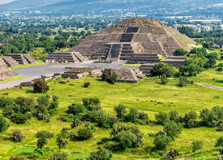
The Pyramid of the Sun is the largest and most famous pyramid in Teotihuacan, Mexico. It stands as one of the most impressive ancient structures in the Americas and remains a symbol of the powerful civilization that once thrived in this region. Built around 200 CE, the Pyramid of the Sun rises about 65 meters (213 feet) high and covers a base area of approximately 225 by 225 meters (738 by 738 feet). It is a key feature of the Teotihuacan archaeological complex, which was once a thriving cultural and religious center. Visitors from all over the world come to explore this grand pyramid and uncover the mysteries of its past. How to Reach Pyramid of the Sun, Teotihuacan The Pyramid of the Sun is located in the heart of the Teotihuacan archaeological site, about 50 kilometers (31 miles) northeast of Mexico City. Here are common ways to reach it: By Car: From Mexico City, take the Mexico-Pachuca Highway (Federal Highway 85D), then follow signs to Teotihuacan. The drive typically takes 45 minutes to an hour. By Bus: Buses run regularly from Mexico City's Terminal de Autobuses del Norte directly to Teotihuacan. The bus ride takes approximately an hour. Guided Tours: Many tour companies offer full-day tours from Mexico City that include transportation, entrance fees, and guided visits to the Pyramid of the Sun and surrounding ruins. Weather The climate around Teotihuacan is generally mild with a dry season from November to April and a rainy season from May to October. The best time to visit is during the dry months when the weather is pleasant and skies are clear. Summers can be warm with occasional afternoon rains, while winters are cooler but dry. It is advisable to dress in layers and bring sun protection, especially if visiting during the warmer months. Timing and Best Time to Visit The archaeological site, including the Pyramid of the Sun, is open daily from 9:00 AM to 5:00 PM. To avoid crowds and heat, visiting early in the morning is recommended. Many visitors arrive right at opening time to enjoy a quieter experience. Late afternoons are also a beautiful time to visit when the setting sun casts dramatic shadows on the pyramid’s steps. Weekdays typically see fewer tourists than weekends or holidays. Why Famous for Pyramid of the Sun, Teotihuacan? The Pyramid of the Sun is famous for being one of the largest pyramids in the world and a centerpiece of the ancient city of Teotihuacan. It was a major religious and ceremonial structure for the civilization that inhabited this region from around 100 BCE to 550 CE. The pyramid’s massive scale and precise alignment with astronomical events highlight the advanced architectural and engineering skills of its builders. It is believed to have been dedicated to a deity associated with the sun, reflecting the importance of solar worship in Mesoamerican culture. The pyramid remains a powerful symbol of Teotihuacan’s spiritual and cultural legacy. Entry and Visit Details about Pyramid of the Sun, Teotihuacan Visitors can enter the archaeological zone through the main entrance where tickets are sold. Admission is affordable, and sometimes there are free entry days for certain groups. Once inside, the Pyramid of the Sun is clearly visible and accessible for climbing. Visitors can ascend the pyramid using a series of steep steps to reach the summit, where they are rewarded with panoramic views of the entire Teotihuacan site and the surrounding valley. It is important to be cautious while climbing, as some steps are steep and uneven. Photography is allowed throughout the site. History and Architecture The Pyramid of the Sun was constructed in several stages over many decades, beginning around 200 CE. Built atop a natural hill called Cerro Pinto, the pyramid was expanded to achieve its monumental height and base dimensions. It was constructed primarily from volcanic rock and adobe bricks, with a stucco finish that originally covered the entire structure. The pyramid features multiple terraces and platforms, aligned astronomically to face the setting sun during key times of the year. Though no clear burial chambers have been found inside, the pyramid was surrounded by offerings and ritual deposits indicating its ceremonial importance. The pyramid’s design embodies the cosmology of the Teotihuacan civilization, symbolizing mountains and their connection to the gods. Things to Do at Pyramid of the Sun, Teotihuacan Climb the pyramid’s steps to the summit and enjoy breathtaking views over the archaeological site and beyond. Walk along the Avenue of the Dead, which leads directly to the Pyramid of the Sun, soaking in the grand scale of the city layout. Explore nearby temples and plazas, such as the Palace of Quetzalpapalotl and the Temple of the Feathered Serpent. Take a guided tour to learn about the cultural and spiritual significance of the pyramid and Teotihuacan civilization. Photograph the pyramid during sunrise or sunset for stunning light and shadow effects. Facts about Pyramid of the Sun, Teotihuacan The pyramid is about 65 meters (213 feet) tall, making it the largest pyramid in Teotihuacan. It covers roughly 225 by 225 meters (738 by 738 feet) at its base. The pyramid was constructed over a natural hill, increasing its height and prominence. Its orientation is aligned to the position of the sun on specific days, indicating its role in solar worship. It took many decades and several construction phases to complete the pyramid. Despite its size, no clear burial chambers have been discovered inside the pyramid. Tips for Visiting Pyramid of the Sun, Teotihuacan Wear comfortable, sturdy shoes for climbing the steep steps. Bring water, sunscreen, and a hat, especially during the hot and sunny months. Visit early in the morning or late in the afternoon to avoid crowds and heat. Consider hiring a certified guide or joining a tour for a more informative visit. Respect the site by not climbing on restricted areas and avoid littering. Check the weather forecast ahead of your visit to plan accordingly. Conclusion The Pyramid of the Sun is an awe-inspiring testament to the ingenuity and spirituality of the Teotihuacan civilization. Visiting this monumental structure offers a unique glimpse into ancient Mexico’s cultural heritage and architectural prowess. Whether you are a history enthusiast, a nature lover, or simply a curious traveler, the Pyramid of the Sun promises a memorable experience steeped in mystery and wonder.
Explore More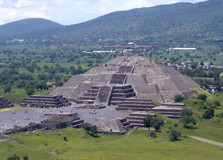
The Pyramid of the Moon is one of the most iconic and impressive structures located within the ancient city of Teotihuacan, Mexico. Standing at approximately 43 meters (141 feet) tall, it is the second largest pyramid in Teotihuacan after the Pyramid of the Sun. The Pyramid of the Moon sits at the northern end of the Avenue of the Dead and overlooks the entire archaeological complex. It was an important ceremonial and religious center for the ancient civilization that built Teotihuacan, which flourished between 100 BCE and 550 CE. Today, the pyramid attracts thousands of visitors every year who come to marvel at its architectural grandeur and historical significance. How to Reach Pyramid of the Moon, Teotihuacan The Pyramid of the Moon is located inside the Teotihuacan archaeological site, about 50 kilometers (31 miles) northeast of Mexico City. Here are ways to get there: By Car: From Mexico City, take the Mexico-Pachuca highway (Mexican Federal Highway 85D) and then follow signs for Teotihuacan. The drive takes roughly 45 minutes to an hour depending on traffic. By Bus: From Mexico City's Terminal de Autobuses del Norte, you can take a direct bus to Teotihuacan. Buses run frequently and the journey takes about an hour. Guided Tours: Many travel agencies offer guided day tours that include transport, entrance fees, and a knowledgeable guide for the entire Teotihuacan site. Weather The climate in Teotihuacan is generally mild and temperate, with dry winters and warm summers. The best time to visit is between November and April during the dry season, as the weather is more comfortable for outdoor exploration and the skies are usually clear. Summer months (May to October) bring warmer temperatures and afternoon rain showers, which can sometimes affect climbing conditions. Timing and Best Time to Visit The archaeological site, including the Pyramid of the Moon, is open daily from 9:00 AM to 5:00 PM. To avoid large crowds and midday heat, it is recommended to arrive early in the morning right when the site opens. Visiting in the late afternoon can also provide a more peaceful experience, with beautiful lighting for photography. Weekdays are generally less crowded than weekends or holidays. Why Famous for Pyramid of the Moon, Teotihuacan? The Pyramid of the Moon is famous not only for its size and imposing presence but also for its cultural and religious significance. It was dedicated to the Great Goddess of Teotihuacan, who was associated with water, fertility, the earth, and creation. The pyramid was the site of important rituals, including offerings and sacrifices, and played a key role in the city’s ceremonial life. Architecturally, the pyramid is renowned for its symmetry, terraces, and the alignment with the surrounding mountains and other pyramids, demonstrating the advanced astronomical and engineering skills of the Teotihuacan civilization. Entry and Visit Details about Pyramid of the Moon, Teotihuacan Visitors enter through the main entrance of the Teotihuacan archaeological zone, where tickets can be purchased. Admission fees are affordable and sometimes free for certain age groups or on special days. Once inside, the Pyramid of the Moon is easy to locate at the northern end of the Avenue of the Dead. Climbing the pyramid is permitted, but visitors should be prepared for steep steps and exercise caution. Photography is allowed, but drones require special permission. Guided tours are available and highly recommended for a deeper understanding of the site’s history and significance. History and Architecture The Pyramid of the Moon was constructed in several phases from approximately 100 CE to 450 CE. It was built over a natural hill, which was flattened and modified to support the pyramid structure. The pyramid consists of multiple stepped terraces and platforms that were used for ceremonial purposes. Archaeologists have found numerous artifacts and tombs underneath the pyramid, indicating its importance as a burial and ritual site. The pyramid’s design reflects the Teotihuacan culture’s cosmology, symbolizing the mountain and the gateway between the earthly world and the spiritual realm. Things to Do at Pyramid of the Moon, Teotihuacan Climb to the top of the pyramid for panoramic views of the entire Teotihuacan site and the surrounding valley. Explore the nearby Plaza of the Moon, which served as a gathering place for ceremonies and events. Visit the adjacent temples and altars to see the intricate stone carvings and murals. Take a guided tour to learn about the mythology, architecture, and history of the pyramid and the city. Photography enthusiasts can capture stunning shots of the pyramid, especially during sunrise and sunset. Facts about Pyramid of the Moon, Teotihuacan The pyramid is approximately 43 meters (141 feet) tall and 150 meters (492 feet) wide at its base. It was built over a natural hill called Cerro Gordo, enhancing its height and prominence. The pyramid aligns perfectly with the surrounding mountains and the Avenue of the Dead, reflecting astronomical significance. Underneath the pyramid, archaeologists discovered multiple ritual burials, including human sacrifices and offerings. The pyramid was central to the Teotihuacan city layout and was the site of many religious ceremonies dedicated to water and fertility deities. Tips for Visiting Pyramid of the Moon, Teotihuacan Wear comfortable shoes with good grip as the climb can be steep and uneven. Bring plenty of water and sunscreen, especially in the warmer months. Visit early in the day to avoid crowds and enjoy cooler temperatures. Hire a guide or download an audio guide app for a more informative experience. Respect the site by not climbing on restricted areas and not littering. Check the weather forecast ahead of your visit to avoid rainy days that might make the climb slippery. Conclusion The Pyramid of the Moon is an essential stop for anyone visiting Teotihuacan. It offers a glimpse into the spiritual and architectural achievements of one of Mexico’s greatest ancient civilizations. The opportunity to climb this majestic pyramid and soak in the views of the archaeological site is an unforgettable experience that connects visitors with the rich history and mystery of Teotihuacan.
Explore More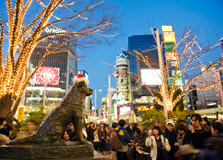
The Hachiko Statue is one of Tokyo’s most beloved landmarks, located right outside Shibuya Station. This bronze statue commemorates the extraordinary loyalty of Hachiko, an Akita dog, who waited for his owner every day at Shibuya Station, even after his owner passed away in 1925. Hachiko's story of devotion touched the hearts of many, and today, the statue serves as a symbol of loyalty, love, and perseverance. It is a popular meeting spot for both locals and tourists and a must-see for anyone visiting the Shibuya district. How to Reach Hachiko Statue, Tokyo Hachiko’s statue is located right outside Shibuya Station, which is one of Tokyo's major transportation hubs. Getting there is easy and convenient, whether you are traveling by train or bus: By Train: The easiest way to get to Hachiko Statue is by taking the JR Yamanote Line, JR Saikyo Line, or the JR Shonan-Shinjuku Line to Shibuya Station. Once you exit the station, follow the signs to the famous Hachiko exit. The statue is located just outside the exit, near the pedestrian crossing. By Subway: You can also reach Shibuya Station by taking the Tokyo Metro Ginza Line, Hanzomon Line, or Den-en-toshi Line. The Hachiko Statue is located on the west side of the station, making it easy to spot after exiting. By Bus: Several bus lines pass through the Shibuya area, including the Toei Bus and Keio Bus. You can get off at the Shibuya Station bus stop and walk to the statue. Weather in Tokyo Tokyo experiences four distinct seasons, and the weather around the Hachiko Statue will depend on the time of year you visit. Here’s an overview of the weather in Tokyo: Spring (March to May): Spring in Tokyo is mild and pleasant, with temperatures ranging from 10°C to 20°C (50°F to 68°F). This is one of the best times to visit the statue as the city is surrounded by beautiful cherry blossoms, and the weather is ideal for sightseeing. Summer (June to August): Summer in Tokyo can be hot and humid, with temperatures often exceeding 30°C (86°F). If you visit during the summer, be sure to stay hydrated and wear light clothing. The crowds at Shibuya can also be quite large, so it’s best to visit early in the morning or later in the evening. Autumn (September to November): Autumn offers cooler temperatures between 15°C and 22°C (59°F to 72°F), and the fall foliage around Shibuya is beautiful. This is another excellent time to visit the statue, as the weather is comfortable and the scenery is breathtaking. Winter (December to February): Winter in Tokyo is cold, but not as extreme as in other parts of Japan, with temperatures ranging from 5°C to 10°C (41°F to 50°F). If you visit during this time, you’ll experience fewer tourists, making it a more peaceful experience to view the statue and explore the Shibuya area. Timing and Visiting Hours The Hachiko Statue is a public monument and is open for viewing 24/7, which means you can visit at any time of day or night. However, the best time to visit is during daylight hours, when you can fully appreciate the surroundings and avoid the rush of people that often gathers around the statue, especially during the evening rush hours. Best Time to Visit: Early morning or late evening, as the area around the statue can get crowded during peak hours (especially in the afternoon and evening). Public Holidays: The statue is open year-round, including holidays. However, be aware that Shibuya Station can be very crowded during public holidays and weekends. Why is Hachiko Statue Famous? The Hachiko Statue is famous for its heartwarming story of loyalty and devotion. Hachiko, an Akita dog, waited for his owner, Professor Hidesaburo Ueno, every day at Shibuya Station, even after the professor tragically passed away in 1925. Hachiko continued to wait at the station for nearly 10 years until his own death in 1935. His story became a symbol of unwavering loyalty, and the statue was erected in 1934 to commemorate his dedication. Today, the statue stands as a popular meeting point, a cultural icon, and a tribute to the bond between humans and animals. Entry and Visit Details about Hachiko Statue Visiting the Hachiko Statue is free of charge, as it is located in a public space. It is one of Tokyo’s most accessible attractions, with no entry fee and no official opening hours. Visitors can come and go at their convenience. Entry Fee: Free Accessibility: The Hachiko Statue is located in a public area outside Shibuya Station, making it wheelchair accessible and easy for everyone to visit. Best Time for Photos: The best time for taking photos is during the early morning or late evening when the sunlight is softer, and the crowds are thinner. The statue is also beautifully illuminated at night, providing an excellent photo opportunity. History and Architecture of Hachiko Statue The Hachiko Statue was created by Japanese sculptor Takashi Ando and was unveiled in 1934, just a year after Hachiko’s death. The bronze statue depicts Hachiko sitting patiently, looking toward the station, symbolizing his famous routine of waiting for his owner. Over the years, the statue has undergone several restorations, including after it was stolen in 1948, though it was later recovered and restored to its original location. The statue’s design is simple yet powerful, capturing the essence of loyalty and love that has made it a beloved symbol in Tokyo and beyond. Things to Do at Hachiko Statue While the Hachiko Statue itself is a relatively simple monument, there are several things to do in the surrounding area to enhance your visit: Take Photos: The Hachiko Statue is one of the most photographed spots in Tokyo. Be sure to snap a picture of the iconic statue and its surroundings. Visit the Shibuya Crossing: After visiting the statue, head over to the famous Shibuya Crossing, just a short walk away. Known as one of the busiest pedestrian crossings in the world, it’s a quintessential Tokyo experience. Explore Shibuya: Shibuya is a vibrant and trendy district with a wide range of shops, restaurants, and entertainment options. Spend some time exploring the area around the statue, including the Shibuya Center-Gai and the famous Shibuya 109 shopping mall. Visit the Shibuya Hikarie: For panoramic views of Shibuya, visit Shibuya Hikarie, a modern shopping and office complex located nearby. The observation decks offer great views of the city, especially at sunset. Interesting Facts and Tips about Hachiko Statue Hachiko's Loyalty: Hachiko’s story is known worldwide and has been the subject of books, movies, and documentaries, including the 2009 film *Hachi: A Dog's Tale*, starring Richard Gere. Popular Meeting Spot: The Hachiko Statue is a famous meeting point in Shibuya. If you’re meeting someone in the area, it’s common to say, “Let’s meet at Hachiko!” Significance in Japanese Culture: The Hachiko Statue has become a symbol of loyalty and dedication in Japanese culture. Many people visit the statue to honor the deep bond between humans and animals. Visiting at Night: The statue is illuminated at night, providing a different but equally striking view. If you're in the area during the evening, don’t miss the chance to see it lit up. Conclusion The Hachiko Statue is a simple yet profound landmark that carries a powerful story of loyalty, love, and devotion. Located in the heart of Shibuya, it attracts millions of visitors each year who come to pay homage to Hachiko and to experience one of Tokyo’s most iconic landmarks. Whether you’re a local or a tourist, a visit to the Hachiko Statue is a must when in Tokyo, and it’s an excellent place to reflect on the enduring bond between humans and their animal companions.
Explore More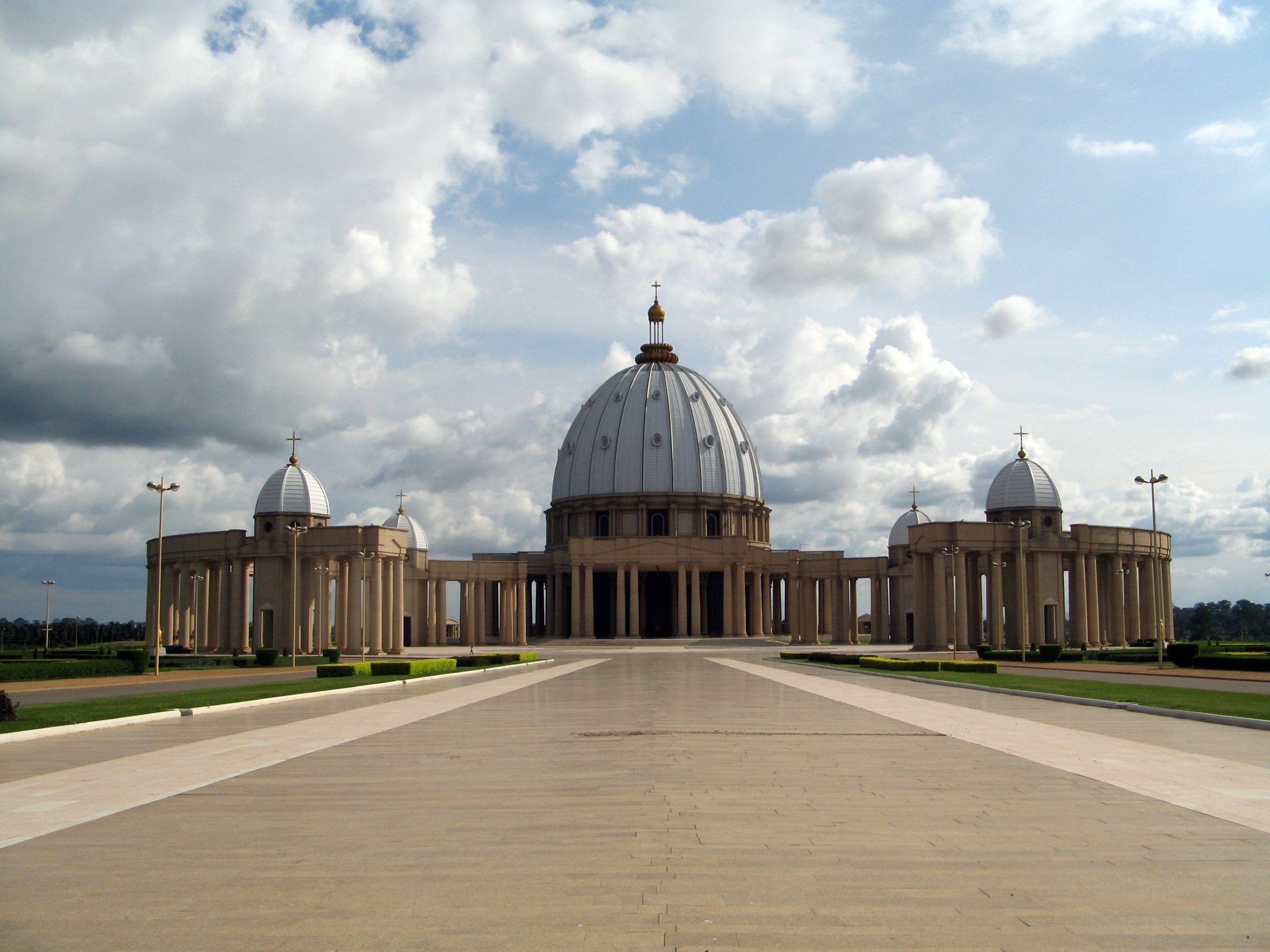
Basilica of Our Lady of Peace of Yamoussoukro
Basilica of Our Lady of Peace of Yamoussoukro, the Roman Catholic minor basilica of Ivory Coast, was built in the dedication of Our Lady of Peace, in the capital city Yamoussoukro of Ivory Coast, Africa. It is the recorded largest church of the world in Guinness World Records. Constructed with Italian marbles and French glass, Basilica of Our Lady of Peace is a majestic piece of Christian Architecture. It is
Explore More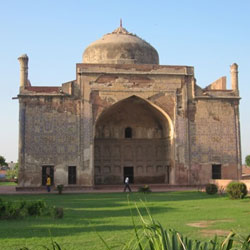
The Chini-Ka-Roza Tomb is a memorial of Allama Afzel Khal Mullah of Shiraz, who was a poet-scholar. He was the prime minister of the famous emperor Shah Jahan. The tomb surface is decorated with various glazed tiles.
Explore More
Gujarat step wells or baolis are strange and unique and the Dada Hari Well built in 1499 is a magnificent masterpiece representing the typical Gujarati style of architecture Entirely underground, they were built to overcome heat and dust. Behind the well is the tomb of Dada Hari. Northern Gujarat abounds in remarkable step-wells, with elaborately carved walls and broad flights of covered steps leading to the shaft.Dada Harini Vav, in the northwest of the city, is one of the finest. While it is a Muslim construction, built in 1500 for Bai Harir Sultani, superintendent of the royal harem, the craftsmen were Hindu and their influence is clear in the lavish and sensuous carvings on the walls and pillars. A lady of Sultan Mahmud Begara court built one such step well in 1501.It is a fascinating place, though has signs of neglect today. It has a series of steps leading down to lower platforms terminating at a small, octagonal well. The depths of the well are cool, even on the hottest day, and it must once have been quite beautiful.
Explore More
Prithviraj Chauhan was a great emperor in the history of Ajmer. His valor is glorified everywhere as he never gave up and fought till the end before getting martyred. Being the last ruler from the Chauhan lineage, he will always be remembered. To commemorate his bravery and reign in Ajmer, a memorial has been erected. This memorial is visited by the people on a huge scale. It Is Known For:-1) Prithviraj Smarak is a well-known memorial in Ajmer. It has the backdrop of the Aravalli Hills2) The statue of the king is carved out of the black marble. It is depicted as seated on a horse and aiming his weapon at the enemy 3) Visitors often visit this memorial on a daily basis but, the footfall increases on the birth and death anniversary of Prithviraj Chauhan. Many folk musical concerts are also held at this place. Best Time To Visit:-There's no special season or day for paying a casual visit at Prithviraj Smarak. This memorial stands in a bustling area and is visited by millions of people on a daily basis. Whether it is summer or winter, day or night, any time is suitable for visiting Prithviraj Smarak and paying homage to a great warrior king. Reaching There:-Prithviraj Smarak stands in a lively area. Hundreds of vehicles cross past it and thus, there's no hassle in reaching this place. It can be easily reached via any means of transport. Nearest Railway Station- Ajmer JunctionNearest Airport- Sanganer Airport
Explore More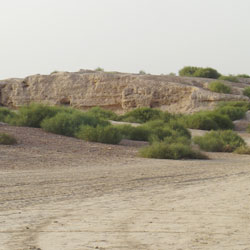
The extensive remains of the pre-Harappan and Harappan civilizations, found at this place in the Hanumangarh district, are of immense interest. This place houses immense treasure of our past and is of particular interest to archaeology enthusiasts.
Explore More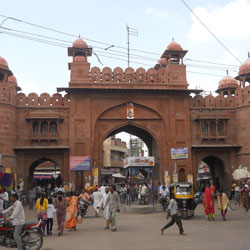
Bikaner is a golden city established in the year 1488 AD by a Rajput prince, Rao Bika Ji. The city has every bit of Rajput territory and houses various havelis, places, museums, temples, and many other places of interest that bring to one mind the magnificence of pastime. Offering a brief look of the stunning architectural work in Bikaner, Kote Gate is the main entrance gate of the city. This structure is an excellent example of intricate artistry of the workers of the olden days. Made of bricks and red sand stones, Kote Gate is standing tall in the middle of the road and separates the old town, and the new town of Bikaner. While one side of the gate is the modern city, the other side has beautiful old havelis or mansions that are the finest architectural pieces. Many visitors from all across the country and even from other parts of the world visit this place to experience and admire the old world charm. This place is most frequented by history buffs, photo fanatics and shopaholics. Things To Do Here: One of the most popular activities to do near Kote Gate is to go for shopping in the local market (bazaar) that is situated around it. The noisy street beside the Kote Gate is filled with plenty of shops and you can shop for some stunning stuff in this market. Attractive options are abundantly offered here. Things you must purchase from here include beautiful accessories made from camel hide, and open-toed shoes that are worn traditionally by the men. Other interesting things that you can fetch here are utensils, miniature paintings, handicrafts, colorful attires, beautiful khadi items like kurtas, wooden carvings or artifacts, Kundan jewelry, fragrant spices, and much more. You can find a number of big hand-loom showrooms and high-end shops in the market, but some of the finest wares can be found and bought from the smaller shops and street stalls. This popular street market in Bikaner has something for everyone. You should use your bargaining skills to a great extent when you enter this market. You never know you might end up purchasing the most exclusive souvenir at never-before prices in this market. And when you get tired of from shopping, you can enjoy some local delicacies here. You also find some eating joint selling specialties like Bikaneri bhujiya, Bikaneri sweets, tea made from camel’s milk, etc. in this street market. The Best Time To Visit Here: Bikaner is a place which experiences extreme climate throughout the year. While the summers of Bikaner are hot and humid, winter days are chilly. So, the best time to visit Kote Gate and the other places of interest in Bikaner is from month of October to March when the climate remains cool and pleasant. Nearby Places To Visit Here: As Bikaner houses many forts, havelis, temples and many more, visitors can explore many interesting places while visiting Kote Gate. Some places of interest near Kote Gate are Ganesh Mandir, Matyasadarshini, Karni Mata Mandir, Ratan Behari Temple, Narsingh Bhagwan mandir, Junagarh Fort, Lallgarh Palace, kharnada Hanuman Mandir, Jagdish Mandir, Bhandsar Jain Temple, Shiv Bari Temple, Kodamdeshwar Temple, Shri Laxminath Temple, Bhandeshwari Jain Temple, Karan Mahal, Phool Mahal, Anup Mahal, Chandra Mahal, Gajner Palace, National Research Center on Camel, Imperial Art Gallery, Visakha Museum, Ganga Golden Jubilee Museum, Prachina Museum, Sadul Singh Museum, Gajner Wildlife Sanctuary, Ramakrishna Beach,etc. How To Reach Here: Bikaner is well-connected with all the major cities of the country like Mumbai, Delhi, Jaipur, Ahmedabad and Chennai. Once you reach Bikaner, you can easily reach Kote Gate as public transport is abundantly available at all parts of the city for easy commutation. • By Air- The nearest airport to reach Bikaner is the Jodhpur International Airport that is at a distance of about 251 km from the place. You can hire private taxi or cab from the airport to reach Bikaner and Kote Gate. • By Train- Bikaner Junction (BKN) and Lalgarh Junction (LGH) are the two railway junctions in the town. As Kote Gate is situated at a walking distance from Bikaner Junction (BKN), you can take public transport like buses, taxi, cab, auto rickshaw to reach the place from this railway station. Visiting Time For Kote Gate: The timings for shopping at Kote Gate market in Bikaner is from morning 10:30 am to evening 8:30 pm. The suggested duration for shopping in the market is around 1 to 2 hours.
Explore More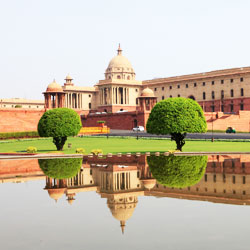
The construction of Rashtrapati Bhawan covers an area of 200,000 square feet nearly a massive number of 700 million bricks and three million cubic feet of stone has been put to use, leaving no space for even a minute particle of steel. Indian architecture comes with a package of water feature hence, variety of circular stone basins were added. Giving a traditional touch there is also a chajja replacing classical architecture’s frieze, prevents harsh sunlight from the windows and also shields them during the rainy season. Chuttris on the roofline erases the flatness of the roofline as it is not covered by dome. Several idols of elephants and fountains sculptures of cobras have been installed further illuminating the Indian theme. Inspired from the Rajasthani style jaalis, enhancing red sandstone has also been installed. The posterior of the palace has 12 unevenly separated huge columns with Delhi order capitals. It also has an unusual coupling of acanthus leaves and bells that are found in Hindu temples, however, the bells were silent which meant there is no end to the end of British rule in India. To glorify his personal resemblance to the house, Lutyens added several bijou personal elements like an area of his in the garden walls and two windows which seemed to resemble the glasses which he wore. DomeIn the middle stands a perfect example of Indian and British fusion, which is exhibiting copper work and mastered over a drum. This seems different from the rest of the building owing to its height, which is nearly twice of the rest. It is situated right in the middle point at which the diagonals of the four corners meet. An enthralling fact is that the building took 17 years to complete. However, eighteen years later India became independent. The Mughal gardens are accessible for visiting by the general Public only during the Udyanotsav during the February-March. What draws maximum attention are the 5000 Tulips blossoming in bright o red, orange and yellow colors mixed with red and white as well. Two restorations were made to the Rashtrapati Bhawan out of which one was made by Sunita Kohli in 1985 which took 4 years to complete and the other was done in 2010 which also involved Sunita Kohli along with Charles Correa. It was decided in the Delhi Durbar of 1911 that the capital of India would be shifted from Calcutta to Delhi. Thus was born the city of Delhi, designed by the great architect Edwin Lutyens, along with Herbert Baker. It took approximately 20 years and 15 million pounds to build New Delhi. Built as the Viceral Lodge, Delhi Rashtrapati Bhawan comprises of four floors and 340 rooms. Now known as the President House of New Delhi, it is spread over an area of approximately 200,000-sq-feet. It took 18 years to construct this building and on the on the 18th year of its completion, India became independent. The Jaipur Column, a gift from the Maharaja of Jaipur, stands at a height of 145 m in the middle of the main court in front of the Rashtrapati Bhavan. Another one of the impressive features of the Delhi Rashtrapati Bhawan comprises of the outstandingly beautiful Mughal Gardens. Then, at the base of the building, is a spacious square, known as the Vijay Chowk. The massive neo-Buddhist copper dome of the President House of New Delhi is splendid and can be seen even from a distance of a kilometer. Underneath this fabulous dome is the circular Durbar Hall, housing the Viceroy's throne, measuring almost 22.8 m in diameter. Before the National Museum was completed, it served as a museum for a number of years. All the official ceremonies such as the swearing in of the Prime Minister, the Cabinet and the Members of Parliament, etc., take place in this hall only. Also, the Arjuna Awards for Excellence are awarded by the President from here itself. On the ground floor of the Rashtrapati Bhavan are a number of state apartments. Then, there is the State Drawing Room, State Ballroom, State Dining Room and a number of other such rooms inside the building. The Delhi Rashtrapati Bhawan consists of 54 bedrooms, along with additional accommodation for guests.
Explore More